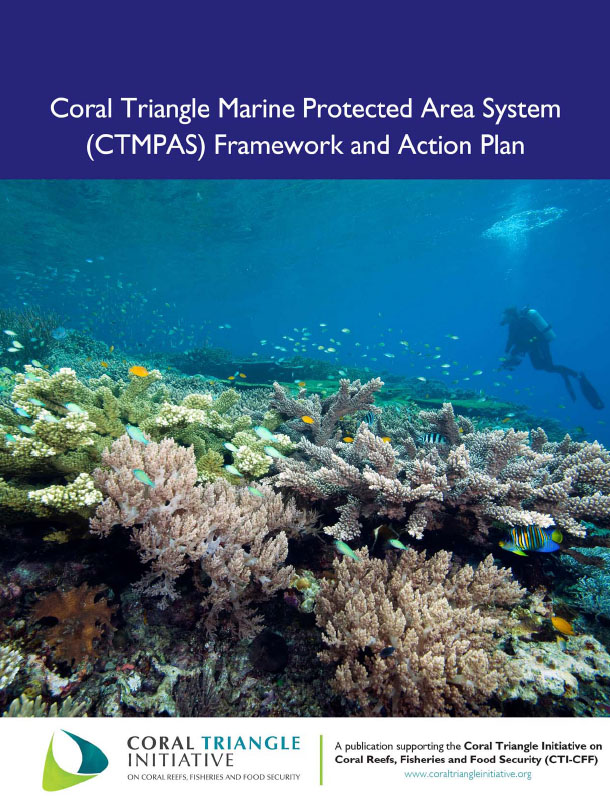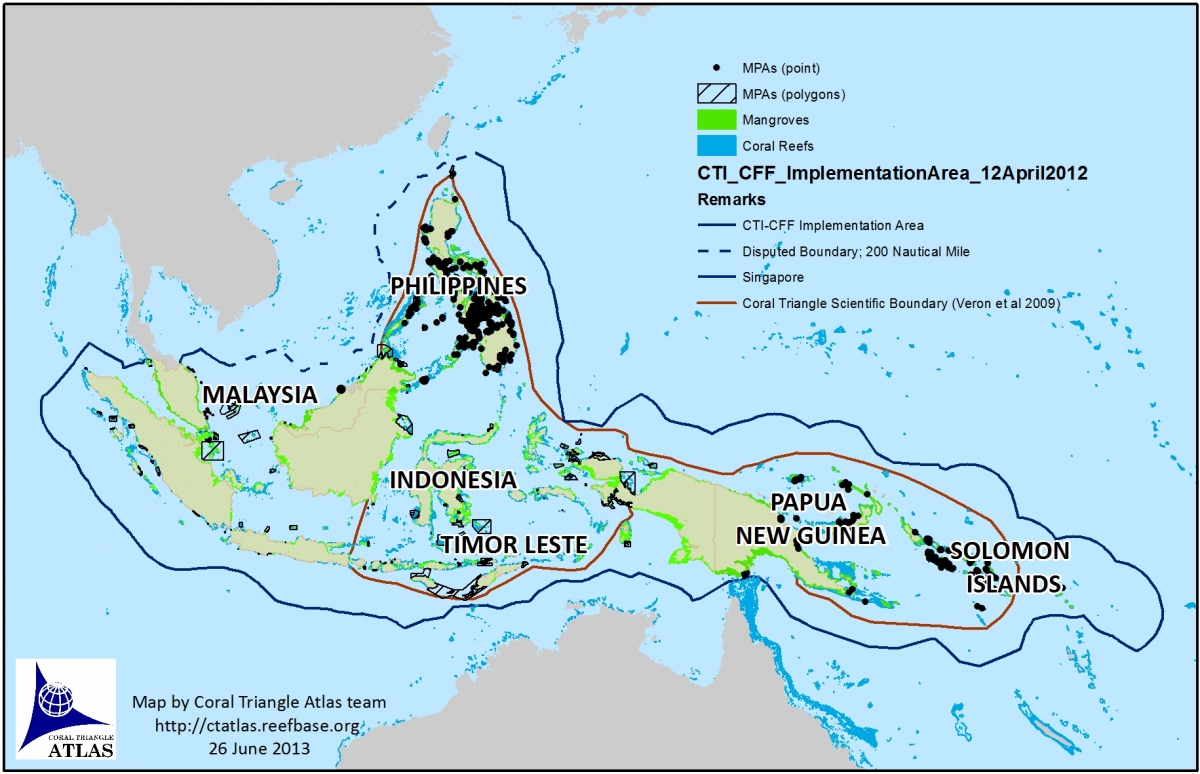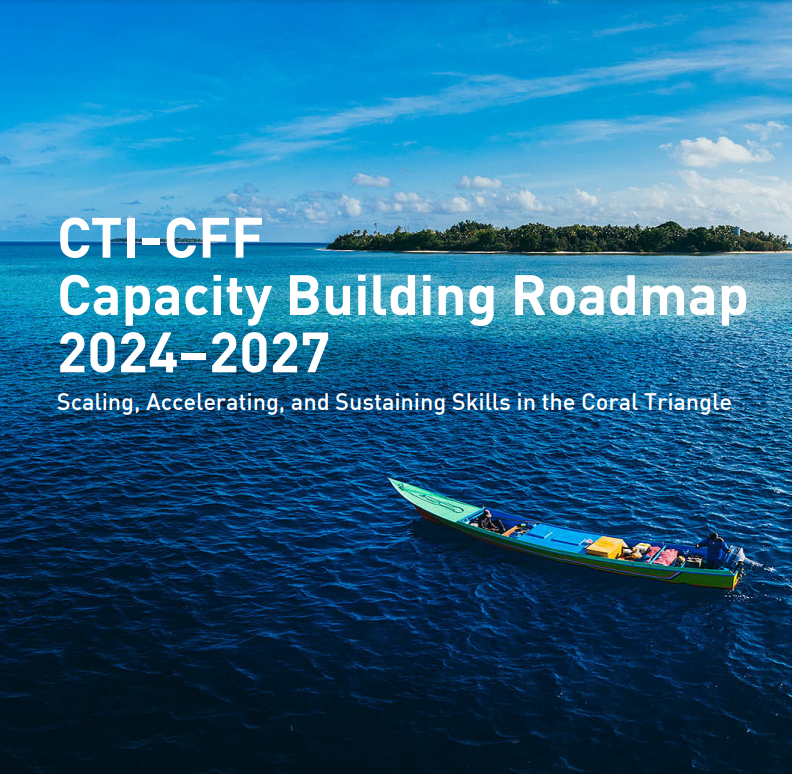Coral Triangle Countries Inaugurate Asia Pacific's Largest System of Marine Protected Areas
August 20, 2013
For Immediate Release
 Manado, Indonesia– More than 100 representatives from the Coral Triangle Initiative (CTI) countries – Indonesia, Malaysia, Papua New Guinea, Philippines, Solomon Islands, and Timor-Leste - gathered in Manado, Indonesia on August 20, 2013 to inaugurate the framework and establishment of the Coral Triangle Marine Protected Area (MPA) System.
Manado, Indonesia– More than 100 representatives from the Coral Triangle Initiative (CTI) countries – Indonesia, Malaysia, Papua New Guinea, Philippines, Solomon Islands, and Timor-Leste - gathered in Manado, Indonesia on August 20, 2013 to inaugurate the framework and establishment of the Coral Triangle Marine Protected Area (MPA) System.
Once established, the Coral Triangle MPA System (CTMPAS) will be the largest network of effectively managed MPAs in the Asia-Pacific region, in various locations within 647 million hectares of land and sea in six neighboring countries. The network will be composed of qualified MPAs nominated by each Coral Triangle country. In order to qualify, MPAs should meet minimum standards for effective management, address core biodiversity issues, fulfill fisheries and climate adaptation needs, and, where appropriate, provide key connectivity linkages within a sub-regional area and to the larger MPA system.
The CTMPAS Framework and Action Plan addresses marine conservation and sustainability issues and harnesses cooperation and collaboration to accelerate cross-learning across the Coral Triangle. It was developed over five years through numerous regional workshops and side discussions, along with parallel work done by partners and countries on various pieces of the framework and plan. It was endorsed by the CTI-CFF during their 7th CTI-CFF Senior Officials Meeting (SOM7) in November 2012.
 “We are very proud of the CTMPAS because it is a cutting edge tool that utilizes the latest scientific development in marine resource management and because of the vastness of its scope” Dr. Sudirman Saad, chairman of the CTI-CFF Interim Regional Secretariat said. He added that most importantly the CTI-CFF considers the CTMPAS a land mark product because it is “critical in enhancing the resilience of of the Coral Triangle’s coastal resources amid various pressures coming from climate change and human activities.”
“We are very proud of the CTMPAS because it is a cutting edge tool that utilizes the latest scientific development in marine resource management and because of the vastness of its scope” Dr. Sudirman Saad, chairman of the CTI-CFF Interim Regional Secretariat said. He added that most importantly the CTI-CFF considers the CTMPAS a land mark product because it is “critical in enhancing the resilience of of the Coral Triangle’s coastal resources amid various pressures coming from climate change and human activities.”
Dr. Saad emphasized that through MPA networks, the CT6 can share the lessons learned and best practices on how to make inclusiveness of coastal communities who are highly dependent on natural resources for their sustenance and subsistence economics activities. As some of MPAs consist of both no take zone and utilization areas, it can make profit and sustainability as an integrated goal. “There are range opportunities how to maintain coastal community access to diversity of livelihoods available from the healthy coral reefs and associate ecosystems, to assess the small scale enterprise development context in a locality and then how to design effective as community assistance strategies that promote successful small-scale enterprises that support on complimentary marine conservation strategies” said Dr. Saad.
An MPA is a coastal or offshore marine area where human activities are managed and regulated by authorities to preserve its ecosystem and cultural resources. Well-managed MPAs can conserve biological diversity, protect fish spawning and nursery habitats, protect shorelines, serve as a platform for scientific research and eco-tourism, improve food security, and enhance the quality of life in surrounding communities.
“Being included in the network provides an incentive for each country to elevate its standards for MPA design and management so that its MPAs will qualify for inclusion in the system,” said Dr. Alan White, senior scientist at The Nature Conservancy and USAID’s US CTI Support Program, who also serves as technical adviser of the CTI MPA Technical Working Group.
The CTI is a multilateral partnership that aims to safeguard the marine and coastal resources of the Coral Triangle, considered the world’s epicenter of marine biodiversity. In its CTI Regional Plan of Action, the Coral Triangle countries recognize the importance of MPAs as a proven tool towards conserving marine biodiversity while sustaining critical fisheries and other marine resources in the Coral Triangle region that are currently under threat.
The Reefs at Risk Revisited in the Coral Triangle Report, released in July 2012 by the US-based World Resources Institute, has raised the flag that more than 85% of reefs in the Coral Triangle are directly threatened by local human activities, substantially more than the global average of 60%. The report highlighted that the greatest threats to the reefs in the Coral Triangle are overfishing, watershed-based pollution, and coastal development and when these threats are combined with coral bleaching due to climate change, the risk increases to 90%. The report proposed recommendations to protect the Coral Triangle, including reducing pressures from overfishing, destructive fishing and run-offs from land and establishing effective and well-managed marine protected areas.
The inauguration was part of the CTI Regional Priorities Workshop organized by the Ministry of Marine Affairs and Fisheries Indonesia, the CTI Interim Regional Secretariat and USAID’s US CTI Support Program. Since 2009, USAID has supported the development of the Coral Triangle MPA System.
Media Contact: Arwandrija Rukma arukma@cticff.org Alan White: alan_white@tnc.org
For more information about the CTI, visit www.coraltriangleinitiative.org. To access maps and spatial data on the Coral Triangle, visit the Coral Triangle Atlas at www.ctatlas.reefbase.org



